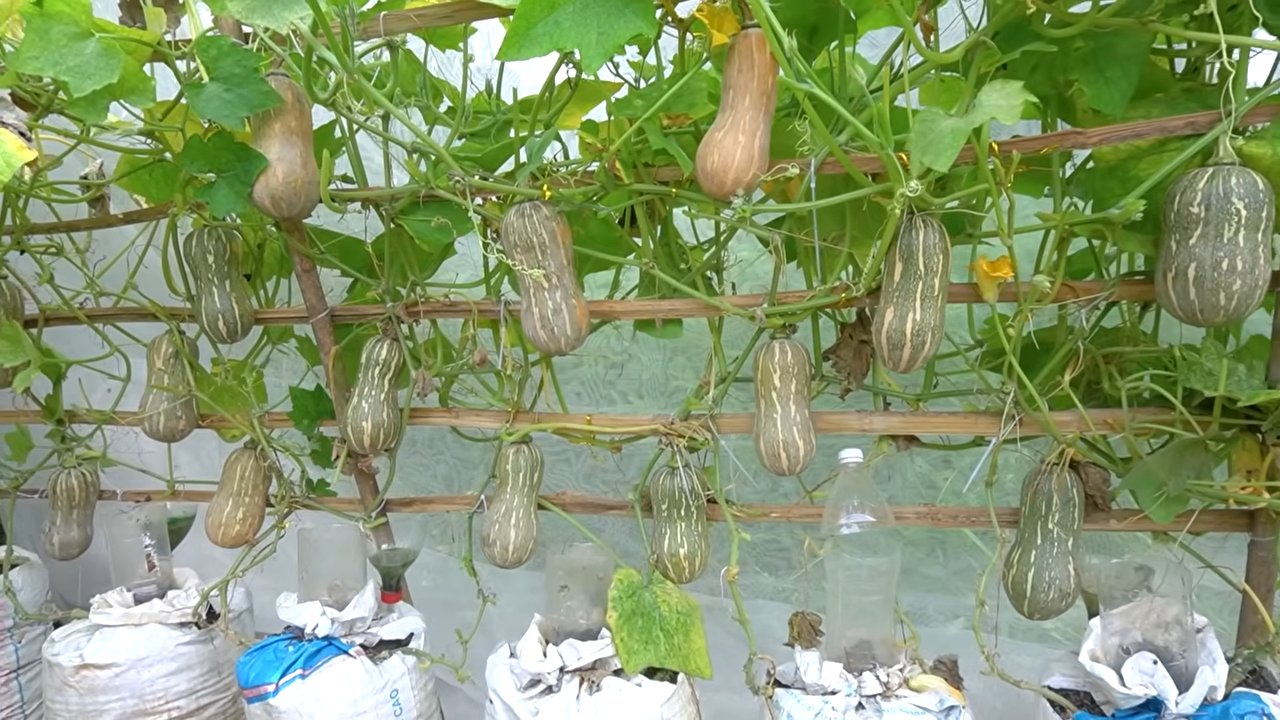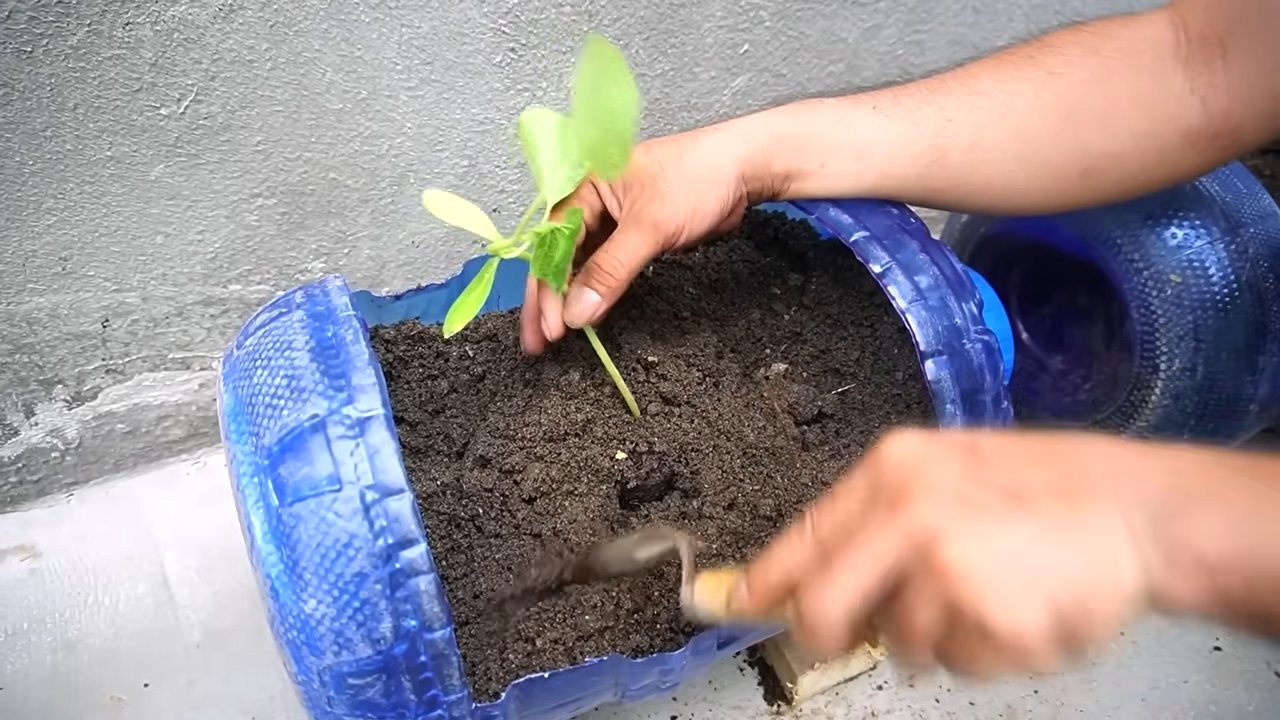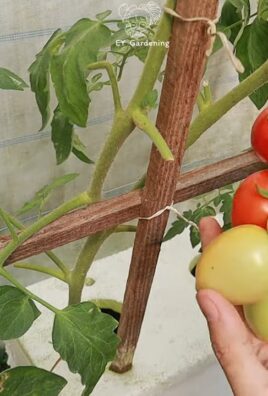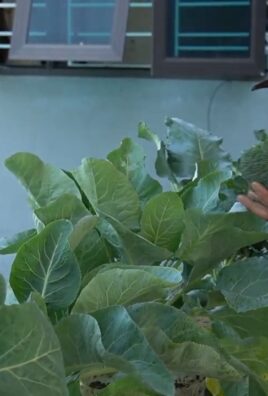Grow Big Pumpkins at Home – imagine the look on your neighbor’s faces when they see a giant pumpkin sitting proudly in your garden! It’s not just a dream; with a few clever tricks and a little elbow grease, you can cultivate prize-winning pumpkins right in your backyard. For centuries, pumpkins have been a symbol of abundance and harvest, deeply rooted in traditions like Halloween and Thanksgiving. From Native American culinary staples to the competitive world of giant pumpkin weigh-offs, these gourds hold a special place in our hearts and cultures.
But let’s be honest, growing a truly massive pumpkin can seem daunting. That’s where these DIY hacks come in! I’m going to share some of my favorite secrets to help you grow big pumpkins at home, even if you’re a beginner gardener. Forget complicated techniques and expensive equipment. We’re focusing on simple, effective strategies that will maximize your pumpkin’s growth potential.
Why do you need these tricks? Because who doesn’t want to impress their friends and family with a colossal pumpkin? More importantly, it’s a rewarding and fun project that connects you with nature and teaches you valuable gardening skills. So, grab your gardening gloves, and let’s get started on your journey to pumpkin-growing glory!

Growing Giant Pumpkins: My Secrets to a Blue Ribbon Winner!
Okay, pumpkin fanatics! So, you want to grow a pumpkin that’ll make your neighbors do a double-take? A real behemoth? Well, you’ve come to the right place! I’ve spent years experimenting, tweaking, and learning the ins and outs of giant pumpkin growing, and I’m here to share my hard-earned wisdom with you. It’s not easy, but with dedication and the right techniques, you can absolutely cultivate a prize-winning pumpkin right in your own backyard. Let’s get started!
Choosing the Right Seed: The Foundation of Your Giant
This is absolutely crucial! You can’t expect to grow a giant from just any old pumpkin seed. We need champion genetics!
* Look for Atlantic Giant Seeds: This is the variety specifically bred for size. Don’t even bother with anything else if you’re serious about growing a monster.
* Source from Reputable Growers: Join a local pumpkin growing club or find online forums dedicated to giant pumpkins. These are great places to find seeds from pumpkins with impressive pedigrees. Look for seeds with documented weight and lineage.
* Consider the Pedigree: The seed’s parent pumpkins matter! Look for seeds from pumpkins that weighed over 1000 pounds, ideally even more. The closer the lineage is to record-breaking pumpkins, the better your chances.
* Seed Viability: Older seeds might have lower germination rates. Try to get seeds from the most recent harvest year possible.
Preparing the Soil: A Feast for Your Future Giant
Giant pumpkins are heavy feeders. They need a nutrient-rich, well-draining soil to thrive. Think of it as building a luxurious buffet for your pumpkin baby!
* Location, Location, Location: Choose a spot that gets at least 6-8 hours of direct sunlight per day. Pumpkins are sun worshippers! Also, make sure the area is sheltered from strong winds, which can damage the vines.
* Soil Testing is Key: Before you do anything, get your soil tested. This will tell you the pH level and nutrient deficiencies. You can usually get this done through your local agricultural extension office.
* Amend, Amend, Amend!: Based on your soil test results, amend the soil accordingly.
* Compost: Add tons of compost! This will improve soil structure, drainage, and provide essential nutrients. I’m talking wheelbarrow loads!
* Aged Manure: Another fantastic soil amendment. Make sure it’s well-aged to avoid burning the roots.
* Peat Moss: Helps retain moisture in sandy soils.
* Lime: If your soil is too acidic (low pH), add lime to raise the pH to around 6.5-7.0.
* Fertilizers: Incorporate a slow-release fertilizer high in phosphorus (the middle number on the fertilizer label). This promotes strong root development.
* Create a Mound: Build a slightly raised mound of soil where you’ll plant your seed. This improves drainage and warms the soil faster.
Starting Your Seed Indoors: Giving Your Pumpkin a Head Start
Starting your seed indoors gives it a jumpstart on the growing season, especially in areas with shorter summers.
1. Timing is Everything: Start your seed about 3-4 weeks before the last expected frost in your area.
2. Choose a Large Pot: Use a peat pot or a biodegradable pot that’s at least 6 inches in diameter. This will minimize root disturbance when you transplant it.
3. Planting the Seed: Plant the seed about 1 inch deep, with the pointed end facing down. This helps the seedling emerge more easily.
4. Keep it Warm and Moist: Place the pot in a warm location (around 75-85°F) and keep the soil consistently moist, but not soggy. A heat mat can be helpful.
5. Provide Light: Once the seedling emerges, provide it with plenty of light. A sunny windowsill or a grow light will work.
6. Harden Off: Before transplanting, gradually acclimate the seedling to outdoor conditions by exposing it to increasing amounts of sunlight and fresh air over a period of about a week.
Transplanting Your Seedling: Moving to the Big Leagues
Once the danger of frost has passed and the soil has warmed up, it’s time to transplant your seedling into its permanent home.
1. Choose a Calm Day: Transplant on a cloudy or overcast day to minimize stress on the seedling.
2. Dig a Hole: Dig a hole that’s slightly larger than the pot the seedling is in.
3. Gently Remove the Seedling: Carefully remove the seedling from the pot, being careful not to damage the roots. If you used a biodegradable pot, you can plant the whole pot.
4. Plant at the Right Depth: Plant the seedling at the same depth it was growing in the pot.
5. Water Thoroughly: Water the seedling thoroughly after transplanting.
6. Protect from Pests: Use row covers or netting to protect the seedling from pests like squash bugs and vine borers.
Vine Training: Guiding Your Pumpkin’s Growth
Proper vine training is essential for maximizing pumpkin size and preventing disease.
* Main Vine Focus: Encourage the growth of the main vine and a few secondary vines. Remove any other vines that sprout.
* Direct the Vines: Gently direct the vines in the direction you want them to grow. Avoid letting them cross over each other.
* Bury the Vines: Bury sections of the vines with soil. This encourages the development of additional roots, which will help the plant absorb more nutrients and water.
* Prune Female Flowers: After the plant has set a few pumpkins, prune off any additional female flowers. You want the plant to focus its energy on growing the pumpkins you’ve already selected.
Pollination: Ensuring a Bountiful Harvest
Pumpkins have separate male and female flowers. You’ll need to ensure that the female flowers are pollinated in order to get pumpkins.
* Hand Pollination: The most reliable way to ensure pollination is to hand-pollinate the female flowers.
1. Identify Female Flowers: Female flowers have a small, immature pumpkin at the base of the flower.
2. Identify Male Flowers: Male flowers have a long stem and no immature pumpkin.
3. Pollinate Early: Pollinate the female flowers early in the morning, when the pollen is most viable.
4. Transfer Pollen: Use a small paintbrush or cotton swab to transfer pollen from the male flower to the female flower.
5. Mark the Pollinated Flower: Mark the pollinated flower with a piece of ribbon or tape so you know which ones you’ve pollinated.
* Let the Bees Do Their Thing: If you prefer, you can let bees and other pollinators do the work. Plant flowers that attract pollinators near your pumpkin patch.
Selecting the Chosen One: Picking Your Champion
Once your plant has set several pumpkins, you’ll need to select the one you want to focus on growing into a giant.
* Choose a Healthy Pumpkin: Select a pumpkin that is round, symmetrical, and free of blemishes.
* Consider the Stem: The stem should be thick and strong.
* Remove Other Pumpkins: Once you’ve selected your chosen pumpkin, remove all other pumpkins from the vine. This will allow the plant to focus all of its energy on growing the one pumpkin.
Watering and Fertilizing: Fueling the Growth
Giant pumpkins need a lot of water and nutrients to grow.
* Water Deeply: Water deeply and regularly, especially during hot, dry weather. Aim for at least 1-2 inches of water per week.
* Fertilize Regularly: Fertilize regularly with a balanced fertilizer. Switch to a fertilizer higher in potassium (the last number on the fertilizer label) as the pumpkin grows larger.
* Foliar Feeding: Supplement with foliar feeding (spraying the leaves with a diluted fertilizer solution) to provide additional nutrients.
Pest and Disease Control: Protecting Your Investment
Pumpkins are susceptible to a variety of pests and diseases.
* Squash Bugs: Handpick squash bugs and their eggs. Use insecticidal soap or neem oil if necessary.
* Vine Borers: Wrap the base of the vines with aluminum foil to prevent vine borers from laying their eggs. Inject Bacillus thuringiensis (Bt) into the vines to kill any borers that have already entered.
* Powdery Mildew: Treat powdery mildew with a fungicide or a homemade solution of baking soda and water.
* Good Air Circulation: Ensure good air circulation around the plants to prevent fungal diseases.
Sun Protection: Shielding Your Giant
As your pumpkin grows, it’s important to protect it from sunburn.
*

Conclusion
So, there you have it! Growing truly massive pumpkins at home might seem like an intimidating feat reserved for seasoned agriculturalists, but with a little dedication, the right techniques, and a whole lot of love, you can cultivate your own prize-winning gourd. This isn’t just about growing a pumpkin; it’s about embarking on a rewarding journey, connecting with nature, and experiencing the thrill of nurturing something extraordinary from a tiny seed to a colossal creation.
The beauty of this DIY approach is its accessibility. You don’t need acres of land or a degree in botany. With careful planning, consistent effort, and a willingness to learn, even novice gardeners can achieve impressive results. The satisfaction of watching your pumpkin swell week after week, knowing you played an integral role in its growth, is unparalleled.
Why is this DIY trick a must-try? Because it empowers you to take control of the entire process, from seed selection to harvest. You’ll learn valuable gardening skills, develop a deeper appreciation for the natural world, and potentially grow a pumpkin that will be the envy of your neighborhood. Plus, imagine the bragging rights!
But the journey doesn’t end with the basic techniques. There’s always room for experimentation and personalization. Consider these variations to further enhance your pumpkin-growing experience:
* Soil Amendments: While we’ve covered the basics of soil preparation, explore different organic amendments like worm castings, compost tea, or even specific mycorrhizal fungi inoculants to boost nutrient availability and root development.
* Pollination Techniques: Hand-pollination is crucial, but you can experiment with different timing and techniques to maximize fertilization rates. Try using a small paintbrush to gently transfer pollen from the male flower to the female flower, ensuring thorough coverage.
* Vine Training: As your pumpkin vine grows, strategically train it to optimize sunlight exposure and prevent overcrowding. Use stakes or supports to guide the vine’s growth and ensure adequate airflow.
* Pest and Disease Management: While prevention is key, be prepared to address potential pest and disease issues. Research organic pest control methods and consider using row covers to protect your young plants from insects.
* Watering Systems: Explore different watering methods, such as drip irrigation or soaker hoses, to ensure consistent and efficient water delivery to your pumpkin plant’s roots. This is especially important during hot, dry periods.
* Companion Planting: Consider planting companion plants around your pumpkin vine to attract beneficial insects and deter pests. Marigolds, nasturtiums, and basil are all excellent choices.
Ultimately, the key to success lies in consistent monitoring, proactive care, and a willingness to adapt to the specific needs of your pumpkin plant. Don’t be afraid to experiment, learn from your mistakes, and most importantly, have fun!
We wholeheartedly encourage you to give this DIY trick a try. Growing big pumpkins at home is an incredibly rewarding experience, and we’re confident that you’ll be amazed by what you can achieve. Once you’ve embarked on your pumpkin-growing adventure, we’d love to hear about your experiences! Share your photos, tips, and challenges in the comments below. Let’s create a community of passionate pumpkin growers and inspire others to join the fun. Happy growing!
Frequently Asked Questions (FAQ)
What is the best variety of pumpkin to grow for a giant pumpkin?
The most commonly grown variety for giant pumpkins is the ‘Atlantic Giant’. This variety has been specifically bred for its potential to reach enormous sizes. While other pumpkin varieties can grow large, the ‘Atlantic Giant’ offers the best chance of achieving truly impressive results. Make sure you source your seeds from a reputable supplier who specializes in giant pumpkin seeds, as genetics play a crucial role in the pumpkin’s ultimate size. Look for seeds from pumpkins that have weighed over 1000 pounds for the best chance of success.
How much space does a giant pumpkin plant need?
Giant pumpkin plants require a significant amount of space to thrive. Each plant needs at least 400-600 square feet of growing area. This allows the vines to spread out and develop a strong root system, which is essential for supporting the massive fruit. Ensure that the area receives at least 6-8 hours of direct sunlight per day. If space is limited, you can try training the vines to grow in a specific direction, but be mindful of overcrowding and potential disease issues.
How often should I water my giant pumpkin plant?
Watering is crucial for giant pumpkin growth, especially during hot and dry periods. Aim to water deeply and consistently, providing the plant with at least 2-3 inches of water per week. The best time to water is early in the morning, allowing the foliage to dry before nightfall, which helps prevent fungal diseases. Consider using a soaker hose or drip irrigation system to deliver water directly to the roots, minimizing water loss through evaporation. Monitor the soil moisture regularly and adjust your watering schedule accordingly.
What kind of fertilizer should I use for my giant pumpkin?
Giant pumpkins are heavy feeders and require a balanced fertilizer regimen to support their rapid growth. Start with a soil test to determine the specific nutrient deficiencies in your soil. In general, you’ll need a fertilizer that is rich in nitrogen, phosphorus, and potassium (NPK). During the early stages of growth, focus on a fertilizer with a higher nitrogen content to promote vine development. As the pumpkin begins to form, switch to a fertilizer with a higher phosphorus and potassium content to support fruit growth and development. Supplement with micronutrients like calcium, magnesium, and iron to prevent deficiencies. Apply fertilizer according to the manufacturer’s instructions and avoid over-fertilizing, which can damage the plant.
How do I prevent pests and diseases from attacking my giant pumpkin plant?
Prevention is key when it comes to pest and disease management in giant pumpkins. Start by selecting disease-resistant varieties and ensuring proper soil drainage. Regularly inspect your plants for signs of pests or diseases, such as aphids, squash bugs, powdery mildew, or vine borers. Use organic pest control methods, such as insecticidal soap, neem oil, or diatomaceous earth, to control pests. For fungal diseases, apply a fungicide according to the manufacturer’s instructions. Remove any infected leaves or vines promptly to prevent the spread of disease. Consider using row covers to protect your young plants from insects.
How do I hand-pollinate my giant pumpkin flowers?
Hand-pollination is essential for ensuring successful fruit set in giant pumpkins. Identify the male and female flowers on your plant. Male flowers have a long, slender stem, while female flowers have a small, immature pumpkin at the base. The best time to hand-pollinate is early in the morning, when the pollen is most viable. Use a small paintbrush to gently transfer pollen from the male flower to the female flower, ensuring thorough coverage of the stigma. After pollination, mark the female flower with a tag or ribbon to keep track of which flowers have been pollinated.
How do I protect my giant pumpkin from sunscald?
Sunscald can be a major problem for giant pumpkins, especially during hot and sunny weather. To protect your pumpkin from sunscald, provide shade during the hottest part of the day. You can use shade cloth, blankets, or even strategically placed plants to create shade. Be careful not to completely block out the sunlight, as the pumpkin still needs some sun to grow. Regularly rotate the pumpkin to ensure even sun exposure and prevent one side from getting too hot.
How do I move a giant pumpkin?
Moving a giant pumpkin requires careful planning and specialized equipment. As the pumpkin grows larger, it becomes increasingly difficult to move without damaging it. Consider using a forklift, tractor with a front-end loader, or a custom-built pumpkin mover. Wrap the pumpkin in blankets or padding to protect it from scratches and bruises. Use straps or ropes to secure the pumpkin to the moving equipment. Move the pumpkin slowly and carefully, avoiding any sudden movements or bumps. Enlist the help of several people to ensure a safe and successful move.
What do I do with my giant pumpkin after the weigh-off?
After the weigh-off, you have several options for what to do with your giant pumpkin. You can carve it into a jack-o’-lantern, use it for a pumpkin drop, or donate it to a local organization. Alternatively, you can save the seeds for future planting. To save the seeds, scoop out the pulp and seeds from the pumpkin. Wash the seeds thoroughly and spread them out on a tray to dry. Once the seeds are completely dry, store them in an airtight container in a cool, dry place.




Leave a Comment